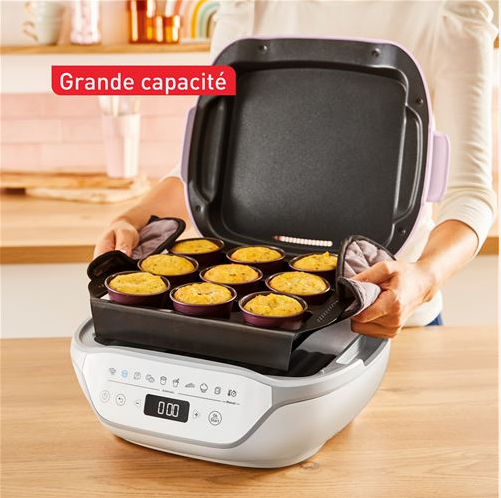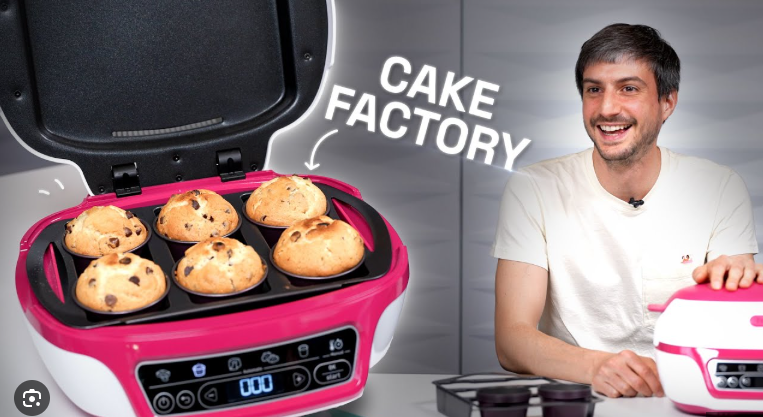When it comes to baking delicious cakes, the debate of cake maker vs oven is a hot topic in 2025. Both appliances have their unique strengths, but which one truly suits your baking needs? In this comprehensive guide, we’ll compare the cake maker and the traditional oven, diving into key aspects like ease of use, efficiency, and versatility. Whether you’re a novice baker or a seasoned pro, understanding the differences between a cake maker and an oven will help you make an informed decision. We’ll explore setup, usage, troubleshooting, cleaning, and more, all while highlighting why the best cake maker 2025 might be the game-changer you need. For more baking insights, check out this baking guide.
Understanding the Cake Maker and Oven
A cake maker is a compact, specialized appliance designed specifically for baking cakes, cupcakes, or cake pops. It’s typically electric, portable, and features non-stick plates or molds for quick and consistent results. On the other hand, an oven is a versatile kitchen powerhouse capable of baking, roasting, broiling, and more. In the cake maker vs oven showdown, the choice depends on your baking goals, kitchen space, and lifestyle.
In 2025, cake makers have evolved with smart features like digital timers and precise temperature controls, making them a popular choice for quick baking. Ovens, however, remain the go-to for larger batches and diverse recipes. Let’s break down the comparison across key categories to help you decide.
Cake Maker Setup vs Oven Setup
The cake maker setup is incredibly straightforward. Simply unbox your portable cake maker, place it on a heat-resistant countertop, plug it in, and preheat for 5-10 minutes. Most models come with clear instructions and require minimal assembly, making them ideal for beginners. For detailed setup tips, visit cake maker resources.
Setting up an oven, however, can be more involved. Whether it’s a gas or electric model, ovens require proper installation, especially for built-in units. You’ll need adequate space, ventilation, and sometimes professional assistance to ensure safety. Preheating takes longer—often 10-20 minutes—and you may need additional bakeware like pans or trays, unlike the self-contained molds of a cake maker.
Winner: Cake Maker for its plug-and-play simplicity and minimal space requirements.
How to Use a Cake Maker vs Oven
Learning how to use a cake maker is a breeze. Prepare your batter, pour it into the pre-heated non-stick molds, close the lid, and bake for 10-15 minutes. Most models have indicator lights to signal when the cakes are done. The process is fast, and the compact design ensures even baking without hot spots. For creative recipes and cake maker tips, you can experiment with mini cakes, muffins, or even savory treats.
Using an oven requires more steps. You’ll need to preheat to the right temperature (typically 325-375°F for cakes), select appropriate bakeware, and monitor baking times, which can range from 20-60 minutes depending on the cake size. Ovens offer flexibility for larger cakes or multiple trays but demand more attention to avoid uneven baking.
Winner: Cake Maker for speed and ease, though ovens excel for complex recipes.

Versatility: Cake Maker vs Oven
In the cake maker vs oven versatility battle, ovens take the lead. A cake maker is specialized for small, round cakes, cupcakes, or cake pops, with some models supporting muffins or cornbread. However, its fixed molds limit creativity to specific shapes and sizes. While a portable cake maker is great for quick treats, it’s not suited for roasting, broiling, or baking large layered cakes.
Ovens, conversely, handle everything from cakes and cookies to casseroles and pizzas. With adjustable racks and temperature settings, they accommodate various bakeware and recipe types. If you’re baking for a crowd or tackling intricate desserts, an oven’s flexibility is unmatched.
Winner: Oven for its ability to handle diverse cooking tasks.
Efficiency and Speed
When time is of the essence, the best cake maker 2025 shines. Its smaller heating area reaches optimal temperatures quickly, and cakes bake in as little as 10 minutes. Energy consumption is lower due to the compact design, making it an eco-friendly choice for small batches.
Ovens, while powerful, use more energy and take longer to preheat and bake. A full-sized cake in an oven might require 30-45 minutes, plus cooling time. For frequent small-scale baking, a cake maker saves both time and electricity.
Winner: Cake Maker for its quick turnaround and energy efficiency.
Cake Maker Troubleshooting vs Oven Troubleshooting
Cake maker troubleshooting is relatively simple. Common issues include sticking cakes (solved by light greasing or thorough cleaning), uneven baking (due to overfilled molds), or failure to heat (check power connections). Most problems are user-fixable with basic cake maker maintenance like cleaning residue off plates.
Oven troubleshooting can be more complex. Uneven baking might stem from hot spots, requiring rack adjustments or foil shields. Temperature inconsistencies could indicate a faulty thermostat, often needing professional repair. Gas ovens, in particular, involve additional safety concerns like gas leaks. While ovens are durable, their complexity makes issues harder to resolve at home.
Winner: Cake Maker for easier fixes and fewer mechanical components.
Cake Maker Cleaning vs Oven Cleaning
Cake maker cleaning is a quick task. After cooling, wipe the non-stick plates with a damp cloth and mild soap. Avoid abrasive tools to preserve the coating. Some models have removable plates for easier cleaning, and the compact size means less surface area to tackle. Regular cake maker maintenance ensures longevity—check out more tips at maintenance tips.
Cleaning an oven is more labor-intensive. Spills and splatters on racks, walls, and glass doors require scrubbing, often with specialized cleaners. Self-cleaning ovens simplify the process but take hours and produce strong odors. Grease buildup in hard-to-reach areas can also be a hassle.
Winner: Cake Maker for its quick and easy cleanup.

Portability: Cake Maker vs Oven
The portable cake maker is a clear winner here. Weighing just a few pounds, it’s easy to store in a cabinet or take to a friend’s house, dorm, or even a camping trip (with power access). Its compact design fits small kitchens or apartments perfectly.
Ovens, whether freestanding or built-in, are bulky and stationary. Even countertop convection ovens are heavier and less portable than a cake maker. If mobility is a priority, the cake maker’s lightweight build is unbeatable.
Winner: Cake Maker for its portability and space-saving design.
Cake Maker Safety vs Oven Safety
Cake maker safety is straightforward. Keep it away from edges, use oven mitts for hot surfaces, and unplug when not in use. Its small size reduces burn risks, and auto-shutoff features in 2025 models enhance safety. Always ensure proper ventilation to avoid steam buildup.
Ovens pose more safety concerns. High temperatures, exposed heating elements, and larger interiors increase burn risks. Gas ovens carry additional hazards like carbon monoxide if not properly maintained. Both require vigilance, but ovens demand stricter cake maker safety protocols due to their power and size.
Winner: Cake Maker for simpler safety measures and lower risk.
Cost Considerations
In 2025, a quality cake maker ranges from $30-$100, depending on features like smart controls or interchangeable plates. Ovens, especially high-end models with convection or smart technology, can cost $200-$2000 or more. For budget-conscious bakers focused on cakes, a cake maker is a cost-effective choice.
Winner: Cake Maker for affordability.
When to Choose a Cake Maker
Opt for a best cake maker 2025 if you:
- Want quick, small-batch baking for cupcakes or mini cakes.
- Have limited kitchen space or need a portable cake maker.
- Prefer energy-efficient appliances with easy cleanup.
- Are a beginner or bake occasionally and want simplicity.
When to Choose an Oven
Choose an oven if you:
- Bake large cakes or multiple dishes at once.
- Need versatility for roasting, broiling, or other cooking tasks.
- Have ample kitchen space and a higher budget.
- Enjoy experimenting with complex recipes or professional baking.
Conclusion: Cake Maker vs Oven—Which Wins in 2025?
In the cake maker vs oven debate, the best choice depends on your needs. The best cake maker 2025 excels in speed, portability, ease of use, and low maintenance, making it perfect for quick, small-scale baking. Its compact design and energy efficiency are ideal for beginners or those with limited space. However, ovens dominate for versatility, capacity, and handling diverse recipes, catering to serious cooks or larger households.
For focused cake-baking with minimal fuss, a cake maker is the way to go. Explore top models and cake maker tips at maintenance tips to start your baking journey. If you need a multi-purpose appliance, stick with an oven. Whichever you choose, happy baking!